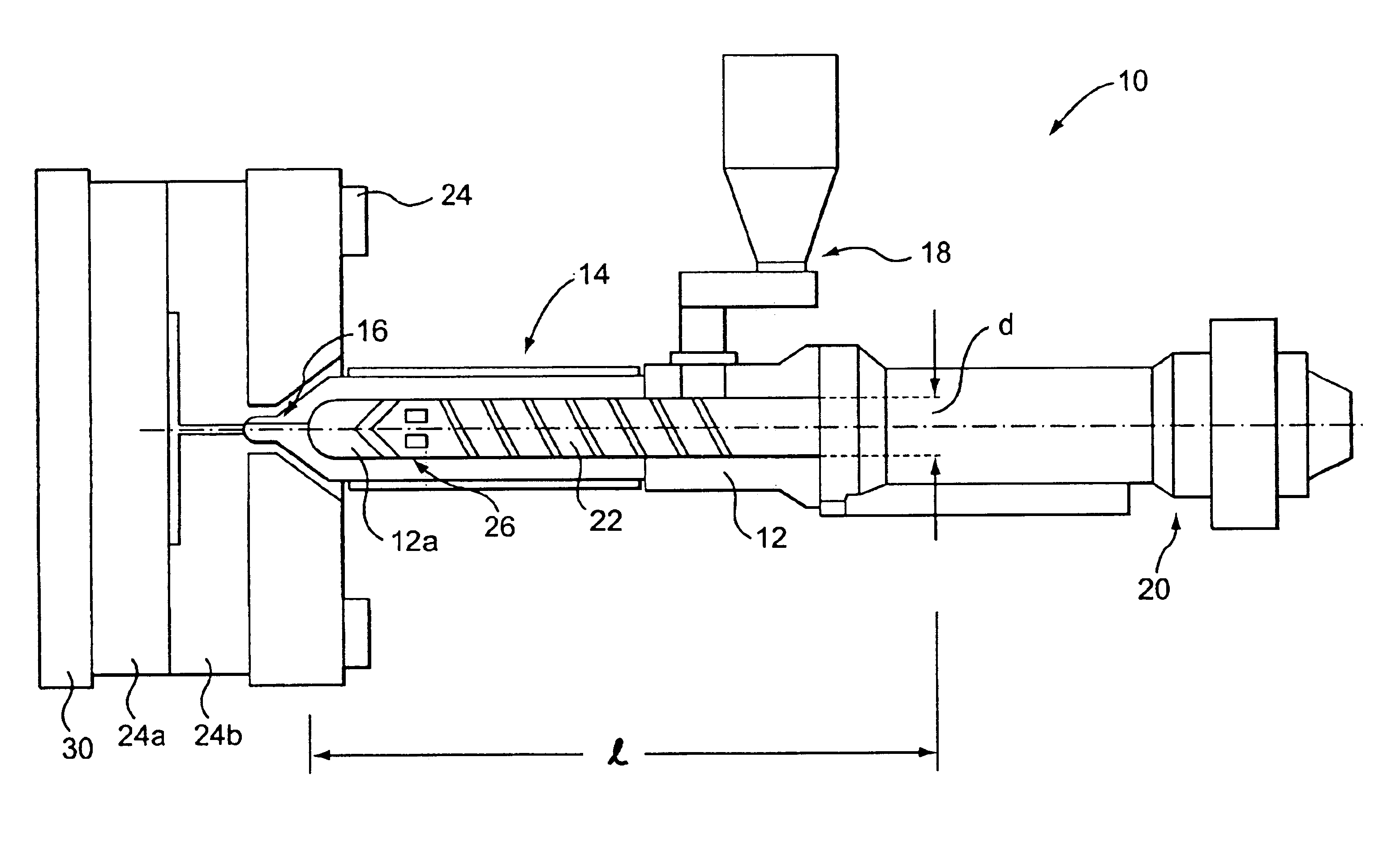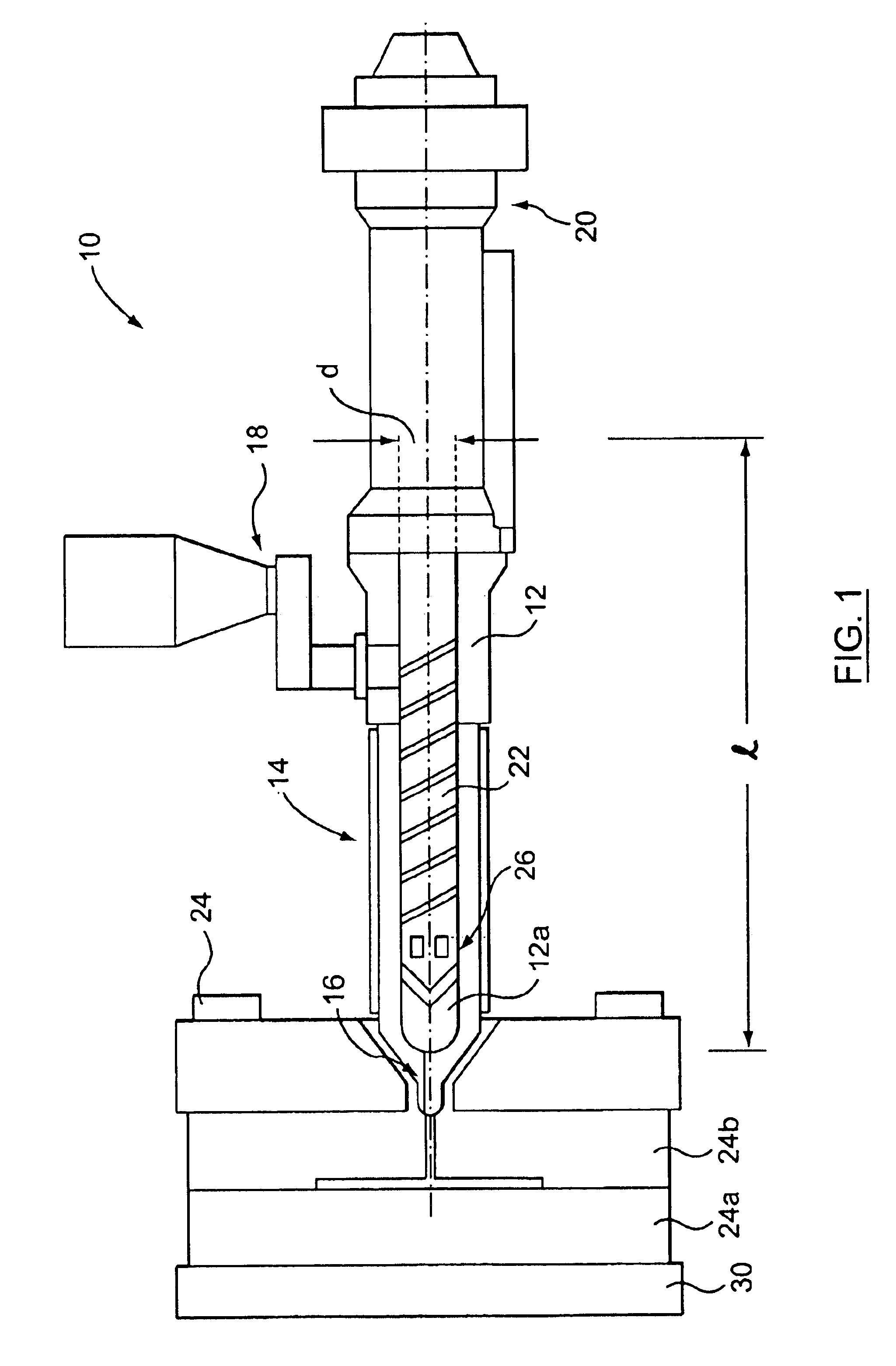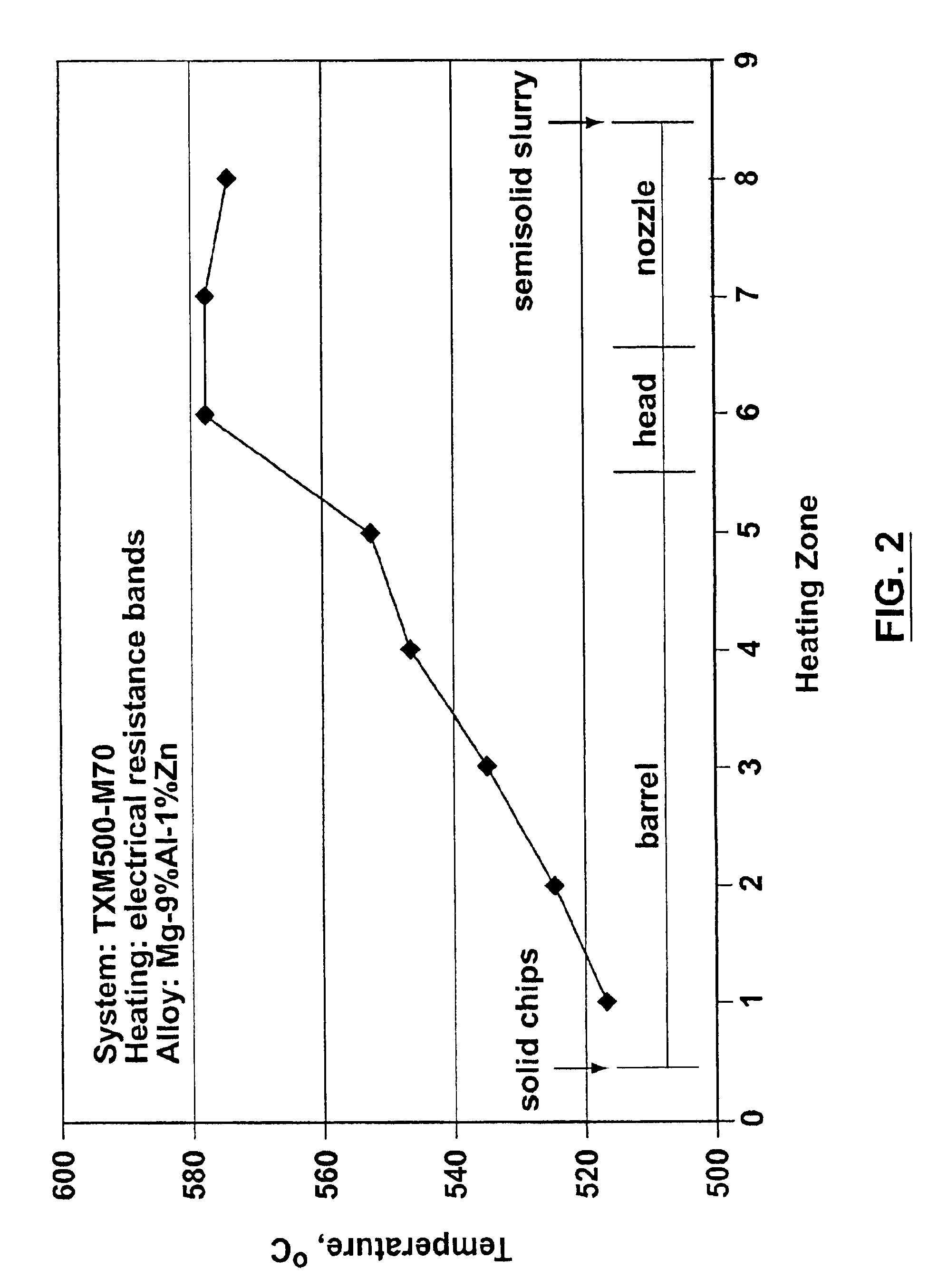Process for injection molding semi-solid alloys
a technology of semi-solid alloys and injection molding, which is applied in the direction of metal founding, chemical apparatus and processes, etc., can solve the problems of degradation of processing yield, inferior product, and mechanical properties of molded articles, and achieves low porosity, less energy, and high quality articles
- Summary
- Abstract
- Description
- Claims
- Application Information
AI Technical Summary
Benefits of technology
Problems solved by technology
Method used
Image
Examples
example 1
[0051]Approximately 580 g of AZ91D alloy was required to fill a mold cavity for molding the clutch housing. The article itself contains approximately 487 g of material, and the sprue and runner contain approximately 93 g. For injection at a screw velocity of 2.8 m / s (gate velocity of 48.65 m / s and mold-filling time of 25 ms), compact parts were produced having a high surface-quality and precise dimensions. By partially filling the mold cavity (partial injection), it was revealed that at this screw velocity the flow front of the alloy slurry was turbulent. Unexpectedly, despite the turbulence, the internal porosity of the fully molded parts (full injection) had an acceptably low value of 2.3%, as discussed in more detail below. The results of this example show that, as long as the mold-filling time is sufficiently fast to achieve full injection while the slurry is still semi-solid, SSIM of slurries of ultra-high solids content can be used to produce high-quality molded articles, even...
example 2
[0052]Under the same conditions as Example 1, but with a 50% reduction in the screw velocity (1.4 m / s), corresponding to a gate velocity of 24.32 m / s and a mold-filling time of 50 ms, premature solidification prevented the alloy slurry from completely filling the mold cavity. The weight of the molded article was 90% of that the fully molded article of Example 1. The majority of the unfilled areas was found to be situated at the outer edges of the article. A partial filling of the mold cavity revealed that the flow front improved in comparison with that of Example 1, but still was non-uniform and not completely laminar. This is especially evident in thin-walled regions, where local flow fronts moving from thicker regions solidified instantly after contacting the mold surface. Unexpectedly, despite the reduction in turbulence, the internal porosity of fully molded parts was higher than that measured for Example 1, and had an unacceptably high value of 5.3%. The results of this example...
example 3
[0053]A further reduction of the screw velocity to 0.7 m / s (gate velocity of 12.16 m / s and mold-filling time of 100 ms) resulted in even less filling of the mold cavity than in Example 2. The molded article weighed 334.3 g, corresponding to 72% of the fully compact article of Example 1. A partial filling of the mold cavity revealed that the flow front in all regions, including thin-walled regions, was relatively uniform and laminar. The results of this example show that, for SSIM of slurries of ultra-high solids contents, a reduction in gate velocity to produce laminar-flow conditions was insufficient to produce a fully molded article of precise dimensions. The internal porosity of partially filled articles, however, had an extremely low value of 1.7%, consistent with injection under laminar-flow conditions.
[0054]A summary of the weights of the molded parts for Examples 1 through 3 is given in Table 2. The weight for the article itself is given as well as the total weight for the ar...
PUM
| Property | Measurement | Unit |
|---|---|---|
| velocity | aaaaa | aaaaa |
| velocity | aaaaa | aaaaa |
| porosity | aaaaa | aaaaa |
Abstract
Description
Claims
Application Information
 Login to View More
Login to View More - R&D
- Intellectual Property
- Life Sciences
- Materials
- Tech Scout
- Unparalleled Data Quality
- Higher Quality Content
- 60% Fewer Hallucinations
Browse by: Latest US Patents, China's latest patents, Technical Efficacy Thesaurus, Application Domain, Technology Topic, Popular Technical Reports.
© 2025 PatSnap. All rights reserved.Legal|Privacy policy|Modern Slavery Act Transparency Statement|Sitemap|About US| Contact US: help@patsnap.com



